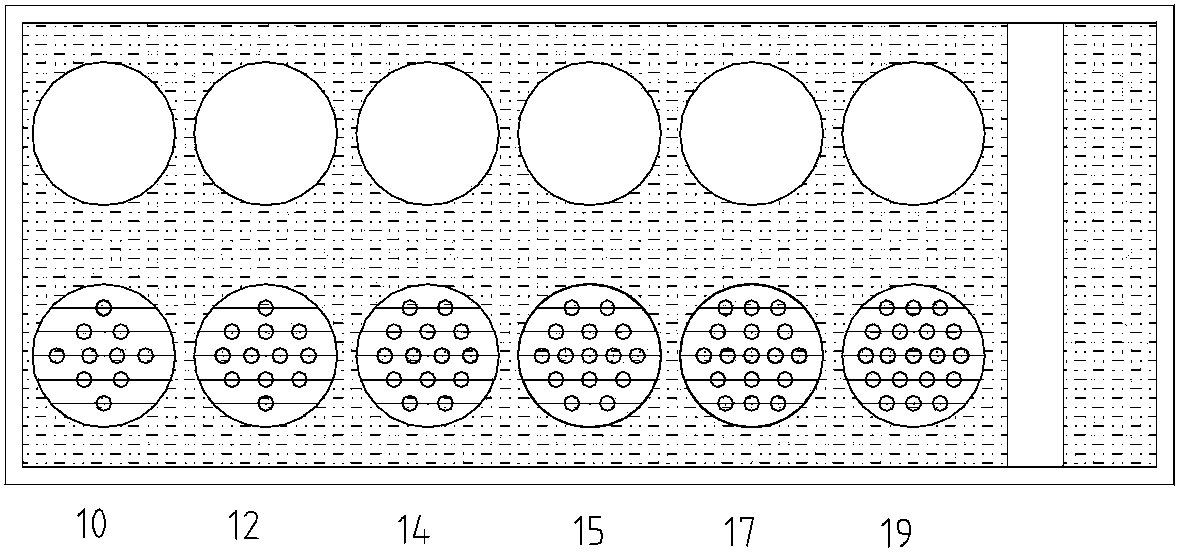Absolute quantification method for fluorescence in-situ hybrid cell counting
A technology of fluorescence in situ hybridization and cell counting, which is applied in the field of fluorescence in situ hybridization detection, can solve problems such as the inability to connect and distinguish microbial community structures, and achieve the effects of simple and accurate calculation methods, extended application depth, and strong applicability
- Summary
- Abstract
- Description
- Claims
- Application Information
AI Technical Summary
Problems solved by technology
Method used
Image
Examples
preparation example Construction
[0038] Ⅰ Preparation of 4% paraformaldehyde-PBS solution
[0039] Take about 5ml of ultrapure water in a beaker, heat it in a microwave oven for 20s until it feels hot to the touch but not hot, pour 0.4g of paraformaldehyde (PFA) weighed in advance into the beaker, add a few drops of 2molL -1 NaOH, until the PFA is completely dissolved, then add 3333 μL 3×PBS, place the beaker in an ice bath to cool, and use 2 molL -1 Adjust the pH to about 7.2 with HCl. Pour the solution into a previously iced 10mL volumetric flask, add ice ultrapure water to volume, filter through a 0.22μm membrane, and transfer to a previously iced reagent bottle. Store in refrigerator at 4°C and use within 24 hours.
[0040] Ⅱ Cell Fixation and Storage
[0041]Take 30 mg of centrifuged sludge, dissolve it in 1000 mL of ultrapure water, and centrifuge at 15000 rpm for 5 min. Discard 700 μL of supernatant, leave 300 μL, shake to resuspend the sludge. Add 900 μL of 4% PFA in PBS, that is, 1 volume of sl...
example
[0058] In order to investigate the effect of carbon-nitrogen ratio on synchronous nitrification and denitrification, four groups of deposited bed biofilm reactors were set up in the experiment, the filler was BX filler, DO was 1-3mg / L, and the carbon-nitrogen ratio was 4, 8, 12, 15. Other conditions are the same.
[0059] 1. When the four groups of reactors are stable, take mud samples from the biofilm and suspension in each reactor, centrifuge at 12000rmp for 3 minutes, take 30mg, and take the same sample and dry it at 120°C for 2h to weigh.
[0060] 2. Select eubacterial gene probe EUB338 (5'-GCTGCCTCCCGAGGAT-3') (5' end Cy3 modified), ammonia oxidizing bacteria gene probe NS0190 (5'-CGATCCCTGCTTTTCTCC-3'.) (5' end FITC labeling) , nitrite oxidizing bacteria gene probe NIT3 (5'-CCTGTGCTCCATGCTCCG-3'.) (HEX mark at the 5. terminal) was used as fluorescence in situ hybridization analysis probes for total bacteria, ammonia oxidizing bacteria and nitrite oxidizing bacteria resp...
PUM
 Login to View More
Login to View More Abstract
Description
Claims
Application Information
 Login to View More
Login to View More - R&D
- Intellectual Property
- Life Sciences
- Materials
- Tech Scout
- Unparalleled Data Quality
- Higher Quality Content
- 60% Fewer Hallucinations
Browse by: Latest US Patents, China's latest patents, Technical Efficacy Thesaurus, Application Domain, Technology Topic, Popular Technical Reports.
© 2025 PatSnap. All rights reserved.Legal|Privacy policy|Modern Slavery Act Transparency Statement|Sitemap|About US| Contact US: help@patsnap.com



